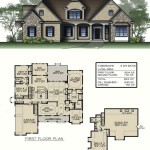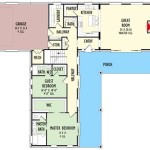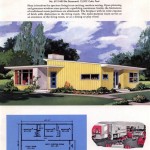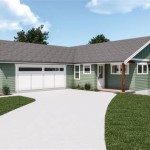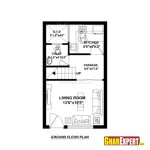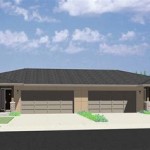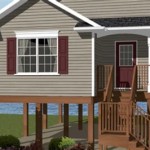```html
Exploring Frank Lloyd Wright Home Plans: A Legacy of Organic Architecture
Frank Lloyd Wright, a name synonymous with architectural innovation and American modernism, left an indelible mark on residential design. His philosophy of "organic architecture," which emphasized harmony between human habitation and the natural world, permeated every aspect of his work. This ideology is vividly apparent in his home plans, which continue to inspire and influence architects and homeowners alike. Exploring these plans provides valuable insight into Wright's design principles and their enduring relevance.
Wright's architectural career spanned over seven decades, during which he designed over 1,000 structures, including homes, churches, schools, museums, and office buildings. However, his residential designs arguably hold the most significant place in the public imagination. These homes, ranging from the modest Usonian houses to the more opulent Prairie School residences, reflected his core beliefs about how people should live and interact with their environment.
Understanding Frank Lloyd Wright home plans requires delving into his core design principles. These principles were not merely stylistic preferences but rather fundamental beliefs that shaped his approach to architecture. His dedication to organic architecture dictated the form and function of each building, creating spaces that were both aesthetically pleasing and deeply connected to their surroundings.
Key Point 1: The Core Principles of Organic Architecture
The cornerstone of Frank Lloyd Wright's design philosophy was organic architecture, a concept he articulated and refined throughout his career. This approach went beyond simply incorporating natural elements into a building; it sought to create a holistic integration of the structure with its environment, the people who would inhabit it, and the materials used in its construction.
One of the main tenets of organic architecture is the concept of "form follows function." Wright believed that the purpose of a building should dictate its design, rather than imposing an arbitrary style onto the structure. This meant carefully considering how the inhabitants would use the space and designing it to facilitate those activities as naturally as possible. He often arranged rooms to create a seamless flow between different living areas, fostering a sense of openness and interconnectedness.
Integration with the site was also paramount. Wright meticulously surveyed the landscape surrounding each building site, taking into account the topography, vegetation, and natural features. He then designed the building to complement these elements, often using local materials to further enhance the connection to the environment. For example, Fallingwater, one of Wright's most famous residences, is built directly over a waterfall, seamlessly integrating the home with the surrounding landscape.
The use of natural materials was another key aspect of Wright's organic architecture. He favored materials like wood, stone, and brick, which he believed possessed inherent beauty and resonated with the natural world. He often left these materials exposed, allowing their textures and colors to contribute to the overall aesthetic of the building. He also emphasized the importance of craftsmanship, believing that the quality of the materials and the skill of the builders were essential to creating a truly harmonious structure.
Finally, Wright emphasized the importance of light and its role in shaping the experience of a space. He carefully considered the orientation of the building and the placement of windows to maximize natural light while minimizing glare and heat gain. He often used skylights and clerestory windows to bring light into the interior spaces, creating a sense of openness and connection to the outdoors.
Key Point 2: Distinguishing Features of Frank Lloyd Wright Home Plans
Frank Lloyd Wright's home plans are recognizable through a set of recurring characteristics. These features, stemming from his architectural philosophy, are evident in the layout, materials, and overall design of his residences.
Open floor plans are a defining characteristic. Wright eschewed traditional compartmentalized layouts, favoring open, flowing spaces that encouraged interaction and a sense of spaciousness. This often manifested in combined living and dining areas, where the boundaries between rooms were blurred, creating a more fluid and dynamic living environment.
The use of horizontal lines is another notable feature. Wright believed that horizontal lines were more harmonious with the natural landscape than vertical lines. He incorporated this principle into his designs by using long, low roofs, cantilevered balconies, and bands of windows that stretched across the facade of the building. This emphasis on horizontal lines helped to visually ground the building and integrate it with the surrounding landscape.
Extensive use of natural light is prominent. Large windows, skylights, and clerestory windows were strategically placed to maximize natural light and create a connection to the outdoors. He understood the importance of natural light in creating a healthy and vibrant living environment, and he made it a central element of his designs.
Built-in furniture is a recurring element. Wright often designed furniture that was integrated into the architecture of the building. This included built-in cabinets, shelves, and seating areas, which were intended to complement the overall design and create a sense of unity within the space. This also served to de-clutter the space, creating a more streamlined and functional living environment.
Fireplaces as focal points are often seen in Wright's designs. The fireplace was often the heart of the home, serving as a gathering place and a symbol of warmth and comfort. Wright often designed dramatic fireplaces that were integrated into the architecture of the building, becoming a central feature of the living space.
Attention to detail is pervasive. Wright meticulously designed every aspect of his homes, from the overall layout to the smallest details, such as the hardware and lighting fixtures. This attention to detail created a sense of harmony and cohesiveness throughout the building, reflecting his belief in the importance of craftsmanship and the integration of all elements into a unified whole.
Key Point 3: Examples of Frank Lloyd Wright Home Plans and Their Significance
Examining specific examples of Frank Lloyd Wright home plans illustrates the practical application of his architectural principles and reveals the range of his design solutions. Each home reflects the unique characteristics of its site and the needs of its inhabitants, showcasing Wright's ability to create truly bespoke living spaces.
Fallingwater (1935), perhaps Wright's most famous residential design, exemplifies his concept of organic architecture. The home is built directly over a waterfall, integrating the building with the surrounding landscape. The use of natural materials, such as stone and wood, further enhances the connection to the environment. The cantilevered terraces create a dramatic visual effect, while the open floor plan and large windows bring the outdoors in.
The Robie House (1909), located in Chicago, is a prime example of Wright's Prairie School style. The home features long, low horizontal lines, a flat roof, and bands of windows that emphasize the horizontal plane. The open floor plan and built-in furniture create a sense of spaciousness and unity. The Robie House is considered one of the most important examples of American architecture.
Taliesin West (1937), Wright's winter home and architectural school in Scottsdale, Arizona, showcases his use of desert materials and his ability to adapt his designs to the harsh desert climate. The building is constructed from local stone and wood, and the design incorporates elements of Native American architecture. The open-air spaces and courtyards create a connection to the surrounding desert landscape.
The Usonian homes, designed during the Great Depression, were Wright's attempt to create affordable housing for the average American family. These homes were typically small, one-story structures with open floor plans, flat roofs, and built-in furniture. They were designed to be energy-efficient and easy to maintain, reflecting Wright's commitment to creating functional and sustainable living spaces.
The Zimmerman House (1950) in Manchester, New Hampshire, is another example of a Usonian home. It features a simple, elegant design with a focus on natural light and open spaces. The home is built around a central fireplace, which serves as the heart of the living space. The Zimmerman House is a testament to Wright's ability to create beautiful and functional homes that are accessible to a wide range of people.
These examples, while diverse in their style and scale, all share a common thread: a commitment to organic architecture, a respect for the natural environment, and a dedication to creating living spaces that are both beautiful and functional. Frank Lloyd Wright home plans continue to offer valuable lessons for architects and homeowners today, inspiring them to create buildings that are in harmony with nature and that enhance the lives of their inhabitants.
```
Frank Lloyd Wright Inspired Home Plan 85003ms Architectural Designs House Plans

Floor Plan The Elam House

An Evolving Aesthetic Frank Lloyd Wright S Home Studio In Oak Park Illinois The Craftsman Bungalow

Three Frank Lloyd Wright Unbuilt Houses Brought To Life As Digital Reconstructions

Frank Lloyd Wright Inspiration 20092ga Architectural Designs House Plans

Frank Lloyd Wright Inspired Home Plan 85003ms Architectural Designs House Plans

S First Frank Lloyd Wright House Blocked By Planning Inspector Archdaily

Frank Lloyd Wright House Floor Plans Historic American Homes Brand

5 Great Architectural Inspirations From Frank Lloyd Wright The House Designers

Frank Lloyd Wright Design Homes Usonian

